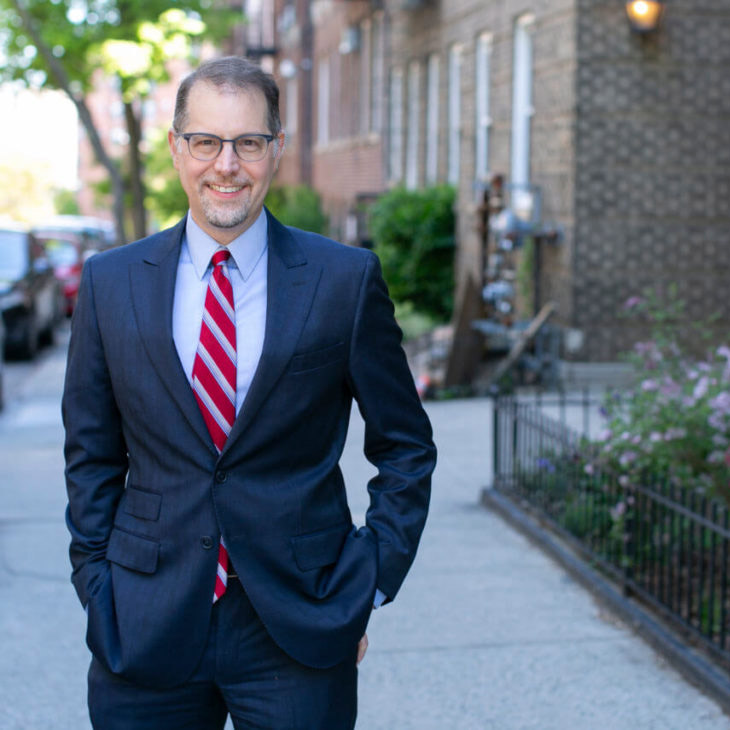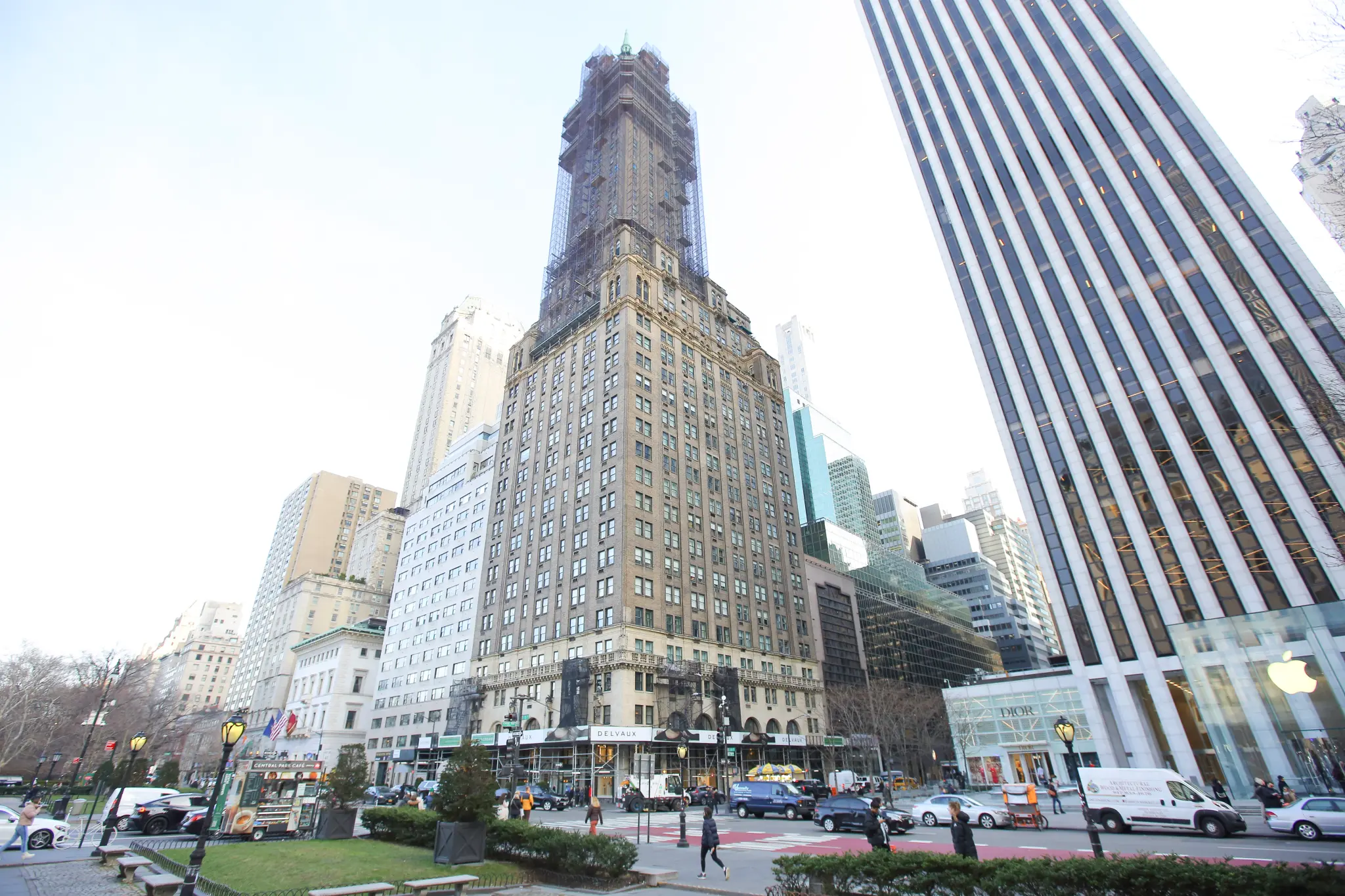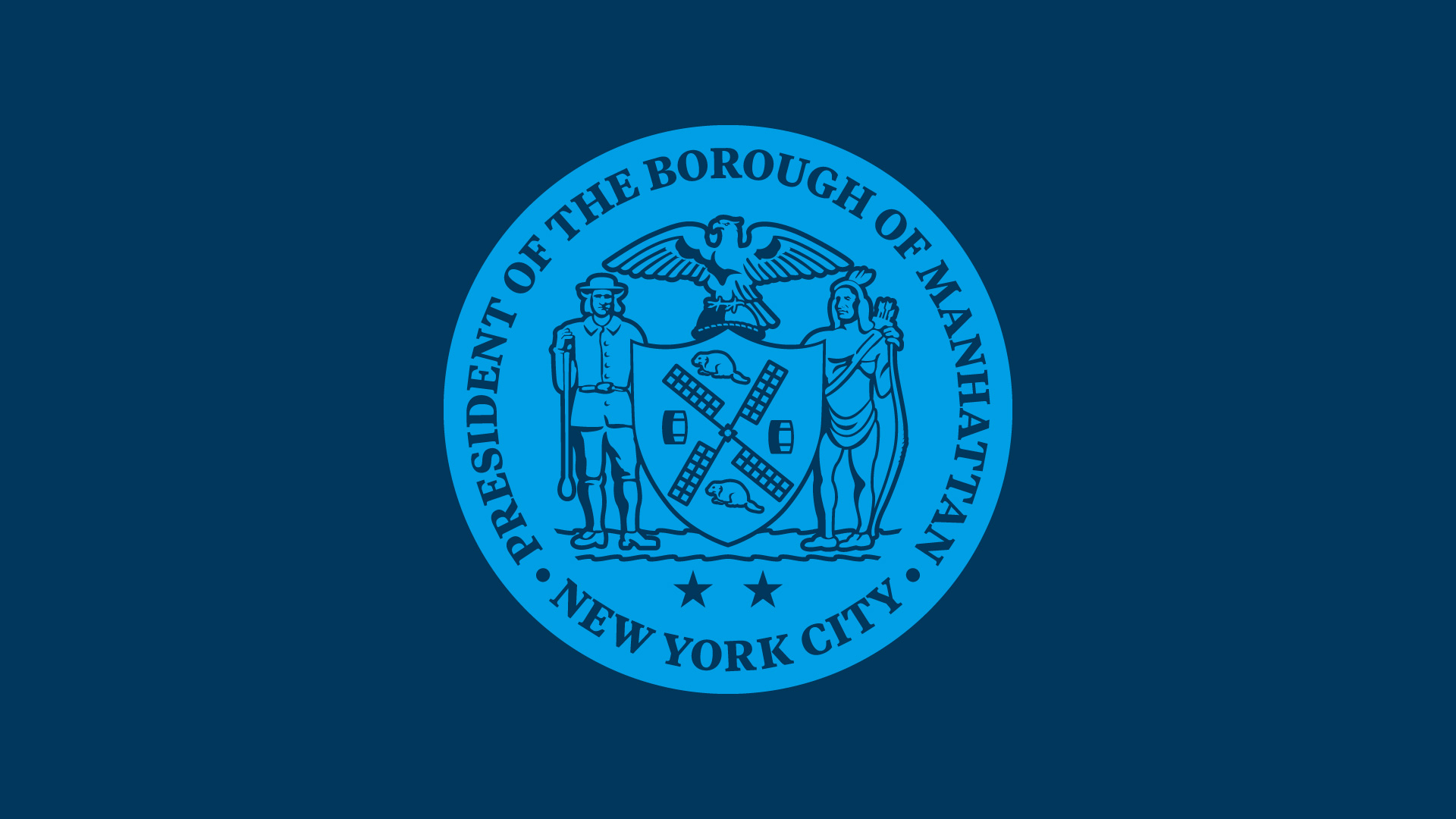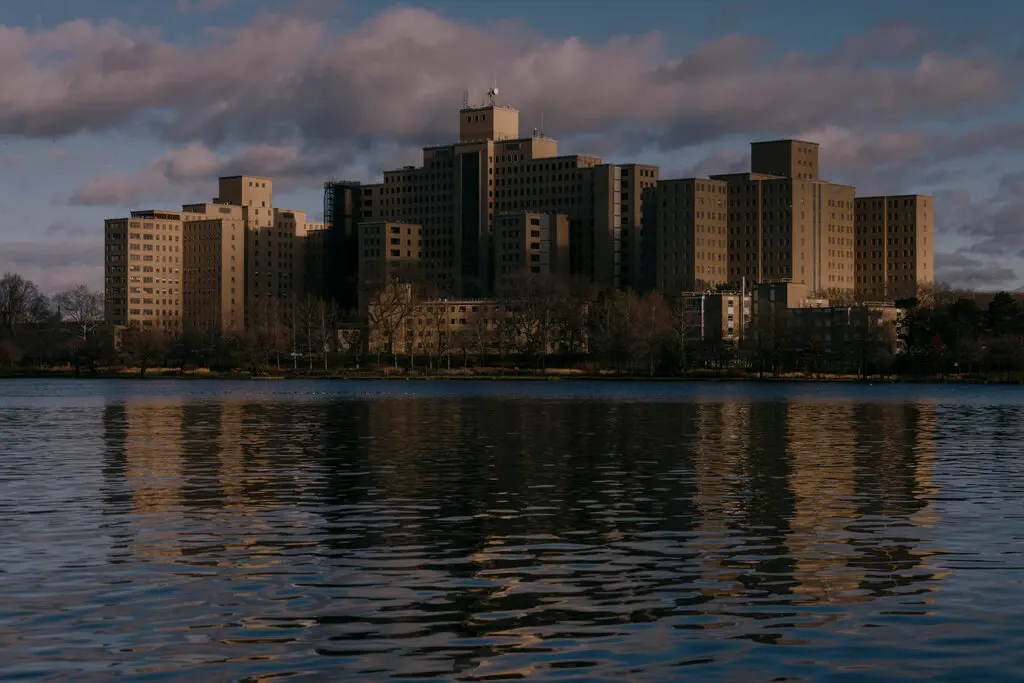On his first full day as Manhattan borough president, Mark Levine issued a detailed, 16-point plan to confront a crisis he had not expected, the Omicron wave of the pandemic. His years as chair of the City Council Health committee certainly prepared him for the moment. But in a conversation with Straus News he stressed his confidence that Manhattan will get through some bad weeks and then be able to focus on reviving the economy, curbing crime and tackling the climate challenge. Excerpts from the discussion:
The day you were elected borough president, November 2, six Manhattan residents were hospitalized with COVID-19. As you took office this month, that number was averaging 135 a day. Did you ever expect anything like this as the inauguration of your term?
I have to say that I did not. I wasn’t naive enough to think that we were done with the pandemic, but I did not expect a wave of this magnitude. I think partly it was wishful thinking, but we have just no choice but to fight, because this is serious. I want to be clear. This is not March of 2020 again, because we have an array of tools in vaccination, testing, treatments that didn’t exist. Hospitals have learned an enormous amount about how to treat this disease. We’re far better off than we were in March 2020. But there is no doubt that except for that moment, this is the most challenging time of the pandemic. This collectively is disrupting life here because every sector has lost 15, 20, 30% of its workforce. Key sectors, whether it’s transit or EMS or banking. The medical sector itself, whether it’s city MD or hospital workers.
We’re calling the vast majority of cases under Omicron mild – because relative to having to be hospitalized, it is. Having just lived through it myself, I can tell you it’s not something you would wish on anyone. For many of us you’re in for a really unpleasant few days. For three or four days I could barely get off the couch. This is the nature of Omicron if you’ve been vaccinated and boosted. The fact that tens of thousands of people in the city a day, and many thousands in Manhattan, are getting diagnosed is, in itself, a public health crisis.
We were really on the cusp of an economic rebound, with tourists starting to return, a lot of companies planning for the return of in-person office in January. Broadway had really had a strong return beginning in September and through the fall, with a lot of demand. And that’s all been set back. Not because of government restrictions, but because the virus itself has forced a rollback. Because of how many people are out of work. Because of concern in the public that’s led to a setback to tourism. There are economic implications to that which we’re going to be grappling with for much of this year.
Mayor Adams has been vocal on getting people to come back to work in the office. I noticed in your 16-point plan that one of your points was “give people the option to work from home for municipal workers.” Is the mayor pushing too hard to get people to come back to the office?
There’s no doubt that we need, at the right moment, the return of in-person office work. Manhattan depends on this. There’s a whole ecosystem of businesses around every single large office building: street vendors, shoe repair, restaurants, the arts institutions which rely on people who can see a show after work. All of it requires the return of in-person office work. But the next couple of weeks are a particularly high-risk time. So I think that for a very limited period, we do need to allow people who can do their job from home to do so. In the borough president’s office we said, “first two weeks of January anyone who would like to can work from home and we’ll reconsider at the end of those two weeks.”
The mayor made a really good point about some businesses which had said work from home until April. And to me that seemed like an unreasonable amount of time. Because barring something unexpected, I think that while January’s going be tough, we’re going be in a really good place probably by early February.
What’s your view of the conversation that really kicked off this week with several Biden health advisors and others saying that we really just have to learn to live with this virus?
I think that some form of SARS-CoV-2 is going to be with us indefinitely. And that it may become just another seasonal sickness that we have to manage, possibly through annual vaccinations like we do with the flu.
But there’s a whole lot between doing nothing and the spring 2020 shutdown level intervention. Some of it is about resources that we make available to the public. So you can get access to kits for home. You don’t have to wait in line for test sites. It’s still too hard to access masks, or too expensive for people who are on limited budgets. Whether it’s resources to safely isolate at home when you’re sick. The system for supporting people in New York city has been totally overwhelmed. It’s very hard even to get through the wait time on the call to report that you have tested positive and need help safely isolating from home, or need access to an isolation hotel. So we need to do much more to put the resources we need into fighting this pandemic to vaccinate and boost and test and mask correctly, and support people for isolation.
And then there’s just a question of guidance and what’s the message to the public? Is our message to the public now, on January 7, “go about living your life as if there were no pandemic” or is our message to the public “this remains a time for caution”?
I do think that we have to be straight with people about the level of risk, and to some extent they’re going make their own decisions based on the trade-offs. If you look at what I called for in my plan there was no kind of forced restrictions that were akin to spring of 2020, no shutdown of indoor dining, for example.
I was very struck that the very first words of your 16-point plan – and 16 points is a lot of points – the very first words were a call for “clear messaging.” And you’ve just cited yet another example of confusing messaging: that there’s a lot of conversation right now about the long term need to live with COVID – which may well be true – at a moment when that’s not really what people need to focus on, is yet another example of what I think you’re talking about. So how do we get to a place with where the government the leaders are giving clear messages.
In public health, messaging is sometimes actually more important than policy. Even the smallest nuances in messaging can have major impact on public health. And it’s very important that we retain credibility with the public, both as elected leaders and public health experts. I think a lot of the stumbles and outright mistakes over the last two years have been failures to message properly. Some of it originates from the understandable desire to avoid giving bad news.
I also don’t think we should fall into the trap of constantly just magnifying the message of doom.
I’m incredibly bullish on the future of the borough and the city. But I’m also worried about the next couple of weeks. I think giving that messaging in a balanced way is what the public wants and deserves.
Let’s talk a little bit about some of the other priorities, which as you suggested, are not unrelated. But they are also separate. What is the work we need to do to get the economy back?
No comeback is going to be possible until we get beyond the crisis stage of the pandemic. So I consider that the actions I’m calling for to manage COVID are also economic development policies. There’s no greater proof of that than the fact that restaurants are now closing in Manhattan because 30% of their staff is out sick. So you can say, “we just want to ignore the pandemic and get back to work,” but then you have thousands of cases a day that start to impact your ability to operate a business, or a transit system or an ambulance system.
So let’s get beyond this acute phase. And then there are several key pillars to a comeback. We need in-person office work to resume. There probably are permanent changes in the way people work. And I embrace that. It’s unclear whether one million people will again come back to Manhattan on a given day. But we can’t continue to have only 20% of the workforce, compared to pre-pandemic here.
And on the margins, we can probably take some office space and convert it to housing. Huge opportunity there to create not just housing, but affordable housing.
We need tourism to return. We were almost at 70 million tourists a year, right before the pandemic hit. It’s an astounding number. It’s more than the country of Spain and it was driving the economy here, especially in Manhattan. We need to get back to that. It might take a while, particularly international tourists, but I believe there’s a huge pent up demand for tourism right now. And I’m confident that once people feel it’s safe, that tourism will come roaring back.
We need the arts to come back. There’s billions of dollars in economic activity that is directly or indirectly related to arts. It’s Broadway for sure, which has more patrons than all the pro sports teams combined in New York city.
They’re better, too, than all our sports teams.
They are. They’re winners.
It’s also off-Broadway and off-off-Broadway. And it is grassroots community arts nonprofits, nonprofits in Harlem and Washington Heights and the Lower East Side that we need to elevate more in the comeback.
Finally, I’ll mention small business, which has been pummeled by the past two years. They were struggling pre-pandemic. We’ve lost thousands, and we have thousands more that are hanging on – it’s so painful – who were just coming back in November and now face this huge setback in December and January with Omicron.
But I’m also confident that the entrepreneurial spirit of Manhattan and New York City will prevail. If we can give them the conditions they need to succeed, rents they can afford, the city being a partner not an obstacle on things like fees and regulations. We need people to feel safe in the city.
Let me ask you then a question about criminal justice and crime. It’s obviously an issue and people are concerned about it, and there seem to be two threads at the moment. Mayor Adams is emphasizing surging police. Bringing back the anti-gun units, putting more officers in the subways. And then we have the new district attorney, Alvin Bragg, who’s stressing limiting prosecutions and trying to limit sentences. Do those two things comfortably coexist?
We have to both advance safety and advance fairness in policing and criminal justice, and we can do both. And I think that both mayor Adams and DA Bragg would agree with that philosophy. I know that DA Bragg considers it an imperative that crime drops in Manhattan. I don’t think he considers that to be superfluous to his mandate. He believes he can do it by making the criminal justice system more just, and I applaud him for that.
In the realm of the kind of policies that a borough president touches, it means that you first invest in the kinds of services that are proven to lower crime, whether it’s youth development programming, workforce development programming, public health services more broadly. We need to do much better on how the city addresses mental health, which is intimately tied to public safety. We need to do better as a city with how we address the human tragedy that is homelessness.
But police are also an important tool. Particularly community policing or neighborhood policing where officers are on the ground to develop relationships with communities as partners. We need accountability in policing for wrongdoing. We need policing out of some arenas where it shouldn’t have crept in. Such as response to someone having a mental health crisis, where, they’re not a threat to themselves or others. You don’t need to send a police officer to that. You can send an EMT and a social worker.
We’ve talked about COVID at length, obviously, and about the economy and crime. Are COVID crime and the economy, the big three? Or is there anything else that you put right up at the top of priority right now?
Public health, yes, even beyond COVID. The deep inequities and access to health care that exacerbated the horrors of the past two years. And equity more broadly. Equity in housing and employment and education.
But what we haven’t talked about, which is going to be a consistent priority for me every day that I’m in this job, is the generational challenge of climate change. And my belief that we can and should make Manhattan the global leader in the race to carbon neutrality. That’s going to require really audacious policies to make our buildings even more efficient, to break our dependence on the private automobile, to electrify everything, to fix the way we manage our waste stream, to fix our food system. And then the related challenge of dealing with the climate change that’s already here. This is a city where the subways shut down if we get a lot of rain. And that’s unacceptable. I’m going to make sure that climate and resiliency are front and center, throughout my tenure.
Do you have specific policies in mind when you talk about limiting our dependence on cars?
First of all, we need a world-class mass transit system. So that transit is a reliable, affordable and safe alternative. And we have work to do to achieve those goals.
I think there’s particularly the ability for some wins on bus service.
Secondly, we need to make it easier and safer and more fun for people to get around on foot and on a bicycle and even on alternative forms of micro-mobility. We need policies like congestion pricing that both will relieve congestion from motor vehicle traffic and will create the kinds of steady revenue stream which we need to make mass mass transit great.
Now, much of Manhattan is comprised of people who will live in the congestion zone, as the plan is currently proposed. And I do think there needs to be some allowance for people who live in the zone to get discounts, possibly in the form of a tax credit. And I’m working with partners in state government on that goal. The primary goal of congestion pricing is that people who are traveling into the central business district transition to other forms of transportation. I think the primary goal of congestion pricing is not so that people who live in the district are penalized.
How do you see your role, the role of the borough president, in relationship to the mayor?
The five of us borough presidents are independently elected executives, right. So our goal should be to support and collaborate with the mayor whenever we can, but also to push for the agenda of the people we represent. I think that you’re going to see a lot of the five of us collaborating on that, even though one of us is a Republican.
Speaking of borough presidents, I notice you have a Sutton prominent in your team.
We do! We have an amazing leader in her own right, Keisha Sutton James. Been active in Harlem politics in New York politics for a long time. She is also the granddaughter of a legendary occupant of this office, Borough President Percy Sutton. Went on to be one of the most influential figures in New York city politics, really, in the 20th century. So we have a dynamite team, but newly-minted Deputy Borough President Keisha Sutton James is really going be just an outstanding leader for Manhattan.
Read the full article HERE.




